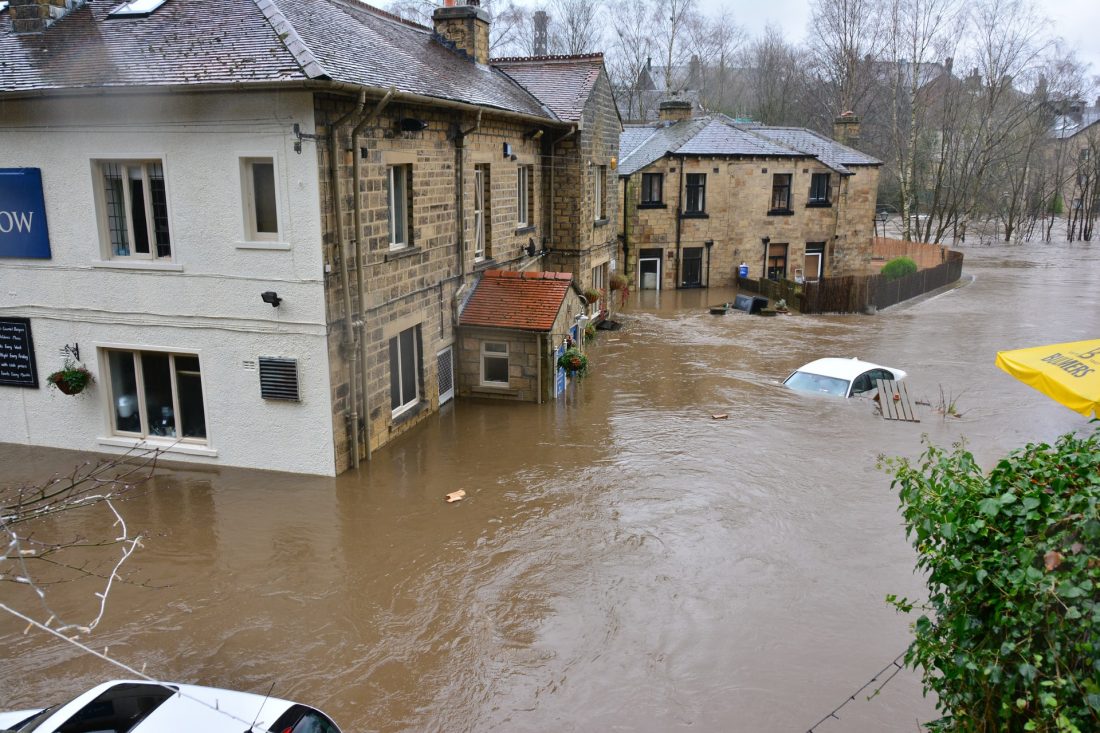How Companies Can Help With Natural Disaster and Emergency Response
 Natural disasters are becoming more frequent and are a growing threat to public safety as they become more severe and impact a higher number of people compared to in the past. While the reasons for this vary, population growth, climate change, and shifts in habitation patterns are some of the most common reasons behind these crisis situations. Because of this, public health and safety officials have to focus even more on developing the processes, tools, and best practices to manage natural disasters more effectively. Effective disaster response and management involves providing the tools, technology, and strategies that enable organizations and professionals in this industry to better manage information from various sources and effectively collaborate to mitigate the damage caused, help survivors, and rebuild communities.
Natural disasters are becoming more frequent and are a growing threat to public safety as they become more severe and impact a higher number of people compared to in the past. While the reasons for this vary, population growth, climate change, and shifts in habitation patterns are some of the most common reasons behind these crisis situations. Because of this, public health and safety officials have to focus even more on developing the processes, tools, and best practices to manage natural disasters more effectively. Effective disaster response and management involves providing the tools, technology, and strategies that enable organizations and professionals in this industry to better manage information from various sources and effectively collaborate to mitigate the damage caused, help survivors, and rebuild communities.
Disasters occur across the world and today, they have become a part of everybody’s life. Ever since they were first recorded, natural disasters such as hurricanes, floods, and earthquakes have been a key part of humanity. Today, the efforts around natural disasters are increasingly focusing on how to prepare for and best respond to the impact of these events. The main priority when it comes to disaster response is to reduce human suffering and material damages.
In the aftermath of a disaster, companies can help in many different ways. Some organizations are focused on disaster management and will take a main role in the process, but others can get involved. For example, during the COVID19 pandemic, Dyson offered support with producing ventilators and other medical equipment, while large and well-known companies have often gotten involved and offered their support after other natural disasters and crisis events such as hurricanes.
Identification of Problems
Before a professional or organization can improve their capabilities when it comes to disaster management and response with new training and technology, it is important for them to gain a clear idea of the problems that they face and are trying to solve. Ongoing challenges in disaster management such as cross-border issues when a natural disaster impacts multiple countries, or the need to quickly communicate and act upon information only reinforce and highlight the need for greater structure and clarity.
Identifying the fundamental challenges that face disaster management today is crucial to being able to put the right solutions in place. For example, one major challenge that is faced by disaster response organizations is the need to automate manual records for humanitarian organizations. Flexible technology is crucial, alongside breaking down regulatory and bureaucratic barriers, to achieve true interoperability that can connect people, organizations, diverse processes and data. A diploma in geographic information system and data analytics from Wilfred Laurier University may help you prepare for a role where you can work to make this happen.
Plans, Strategies and Preparation
While there is no plan that will be able to take all the needs of every future potential natural disaster into account, organizations and professionals should have a strong plan in place that allows them to get a head start and ensures that they can respond to any future crises quickly. Since every minute counts in a natural disaster situation, it’s important to consider various factors that you will need to plan for including the resources that you will employ, which factors will trigger your company to employ these resources, who you need to work together with to respond in the event of a disaster, and the strategies that you will use to find the right local partners.
Support Long Term Recovery
While a lot of efforts are often poured into immediate response to disasters, fewer resources are unfortunately often put in place when it comes to long-term recovery efforts. The individuals and communities that are impacted by natural disasters may often find themselves in a situation where it will take them years to successfully rebuild their lives. Disadvantaged communities in particular will often suffer disproportionately in comparison to others. For companies that want to help or are already focused on responding to future natural disasters, it’s worth considering how you can help not only in the immediate aftermath, but also in the long run.
Use Your Unique Assets
The variety of needs that you will face in the aftermath of a natural disaster are endless. Using your company’s unique assets can be an effective and rewarding way for your company to help your community. For example, during Hurricane Harvey, a furniture business opened certain stores up to the public for shelter, allowing those who had been left without a home as a result of the hurricane to rest on the furniture within the store. Google developed a map that people could easily use to find shelters, and various delivery companies provided free cargo transportation.
Involve Everybody
Getting involved in disaster relief methods can be something that all company employees can get involved in. When a natural disaster strikes, many people will often want to help, but are unsure how they can do this. Engagement is likely to rise if you are able to involve everybody in your company in your disaster relief efforts. Everybody will be able to help in different ways based on their skillset and role. For example, in the event of an earthquake, flood, or hurricane, employees who are skilled in construction and other similar trades are going to be highly sought-after. You can allow these employees to dedicate hours to relief aid and get them involved in a meaningful and rewarding project. Employees can also get involved by providing shelter where possible, donating items, preparing food, and helping with the other basics that people tend to need in the aftermath of such events.
Conclusion
Company involvement in disaster relief has now moved beyond simply giving cash donations to victims. Around the world, companies have become a necessary part of providing aid when a disaster strikes, and there are many ways that businesses of all sizes can get involved and help. By understanding the main problems that are faced in these situations, preparing in advance, and using your company’s unique assets to provide solutions, your company can play a key part in community recovery.









